Why I love islands: scuba diving and snorkeling
Last updated on October 7th, 2015 at 10:30 pm
Since the Florida vacations of my childhood, I’ve loved going to the beach. In my younger life, that meant sunbathing, walking up and down the beach, and maybe getting in the ocean to ride in the waves on a blow-up float. I was a swimmer, but not a strong one. I mainly used the motel pool to cool off. But I loved the whole atmosphere of being at the beach — the sand, looking out at the turquoise blue water, the sea breeze, the sunsets, and the seafood. I was inspired by being there and used to take my guitar on vacation so I could sit by the ocean and play folk songs.
My first tropical trip outside the U.S. didn’t happen until 1990, when I spent a week at the Sandals Montego Bay in Jamaica. It was there that I tried snorkeling for the first time. Even though I had practiced with a mask and snorkel in a friend’s pool before the trip, I was more than a little apprehensive. I’ll never forget Barney, a Jamaican watersports guy at the Sandals resort, who got in the water to help this first-time snorkeler become comfortable enough to relax and look at the beautiful fish below me. Having a positive first experience helped me to consider taking the next step to become a certified SCUBA diver.
I began accumulating information about the skills required to become a certified diver, including having to swim 200 yards and float and tread water for 10 minutes. I started practicing in a local university pool until I felt confident enough to sign up for classes at my local dive shop.
The training included classroom instruction and time in the pool, becoming familiar with setting up the equipment and getting comfortable with spending time underwater. That included practicing things like taking off my mask and putting it back on (underwater!), taking my regulator out of my mouth and putting it back in (underwater!), buddy breathing, which involved taking my regulator out of my mouth and sharing air with my “buddy,” (yes, underwater!), swimming the length of the pool without my mask on, and other necessary skills to prepare me for any challenges I may face while underwater. Oh, and then there was learning how to equalize the pressure in my ears as I descended to depth. (If you can’t clear your ears, you won’t be able to dive. A stopped up ear from allergy congestion or a cold can be aggravating, but continuing to descend can cause pain and even a burst eardrum, which could end your dive career before it’s begun!)
It was sometimes a bit scary, but step-by-step I persevered and finished the classroom work followed by learning skills in a pool at the local university. To complete my certification, I needed to complete four open water “checkout” dives. For that final phase, we traveled from Evansville, Indiana, to Panama City, Florida. More fears crept in at the thought of jumping into the ocean to perform all the skills we had practiced in the pool. Even though my first giant stride entry from a boat into the sea didn’t go smoothly (my mouthpiece detached from my regulator…my breathing apparatus!), I didn’t panic and once it was replaced, I continued to the sandy bottom to join the rest of the students and managed to do what I needed to do to become a PADI certified SCUBA diver. I can honestly say that learning to scuba dive changed my life.
- Brittlestar, St. Croix
- Cathedral Reef, Tobago
- Puffer fish, Nevis
- Queen Angelfish, Galapagos
- Champagne Reef, Dominica
- Yellow Cup Corals, Bonaire
- Brittlestar, Grand Cayman
- Caribbean Lobster inside barrel sponge
- Barrel Sponge, San Salvador, Bahamas
- Sea Plume, San Salvador, Bahamas
- Diver with fish, San Salvador, Bahamas
- Sea Biscuit, Tobago
- Anenome, St. Kitts/Nevis
- Hawksbill turtle, Caribbean
- Stingray, Moorea
- Reef Fish, Moorea
- Schooling fish, San Salvador, Bahamas
- Green moray eel, Tobago
- Chocolate Chip Sea Star, Galapagos
- Trunkfish, Tobago
- Pink-Tipped Anenome, St. Kitts/Nevis
In the years that have followed, I’ve completed nearly 170 dives, equating to about five 24-hour days underwater! While I’ve dived off the shores of practically every island I’ve visited, my fascination with the fish, coral and sea creatures inhabiting this watery world has only increased. I am still awestruck by the beauty and diversity of life in the oceans of the world.
So, what about snorkeling? Snorkeling can be relaxing, almost meditative, when the water is calm and the salt water’s buoyancy allows me to bob like a cork on top of the water, viewing the life below me through my mask as I breathe fresh air through my snorkel. Some of my best snorkeling experiences have been in calm, protected coves and lagoons, or around piers or shallow wrecks.
- Snorkeling, Vomo Reef, Fiji
- Snorkeling, Crown of Thorns starfish, Fiji
- Snorkeling Bucco Reef, Tobago
- Snorkeling, Parrotfish and Reef Squid, Tobago
- Snorkeling, Spotted Moray Eel, Tobago
- Snorkeling, Galapagos
- Snorkeling, Vomo Reef, Fiji
- Snorkeling, Galapagos
Snorkeling can also be a lot of work, if the surface of the water is choppy, or if there is a current, or if there are boaters or jetskiiers coming close to the reef. In the right conditions, I love snorkeling; in less than desirable conditions, I always wish I were on SCUBA (which stands for Self Contained Underwater Breathing Apparatus, by the way!) and could be under the water with the fish!
If you’re interested in learning to dive, read more about it at PADI’s website, padi.com, the world’s largest dive training organization. If you’re not ready to become a fully certified diver, you can try it out via PADI’s Discover Scuba Diving program.
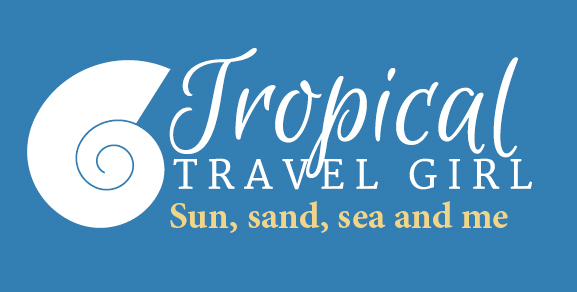

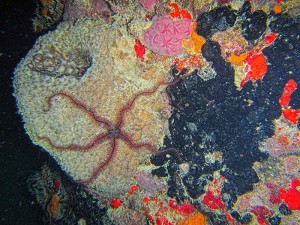
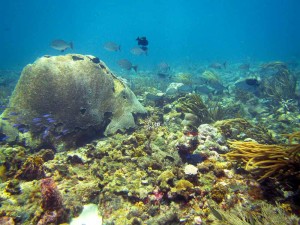
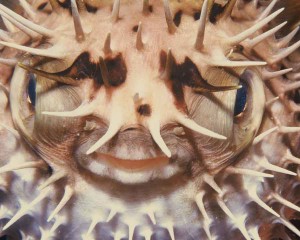
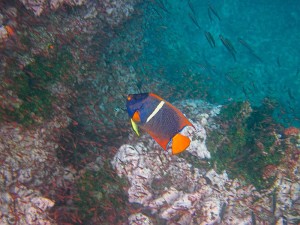
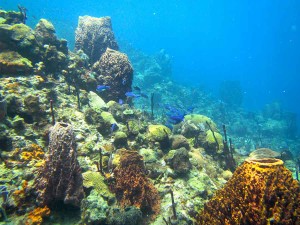
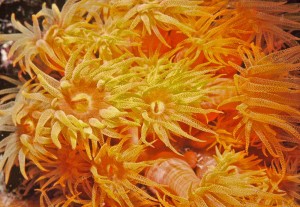
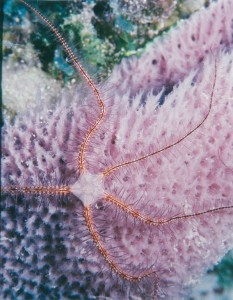
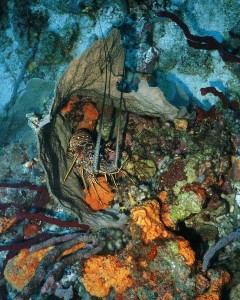
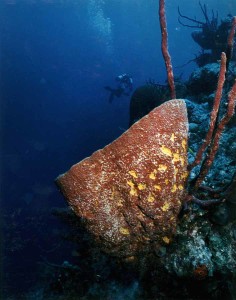
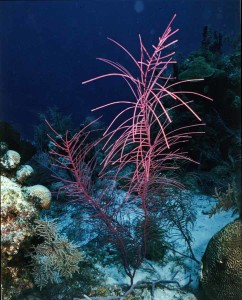
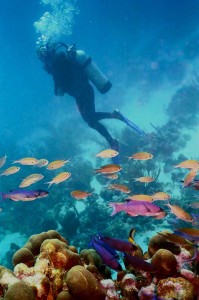
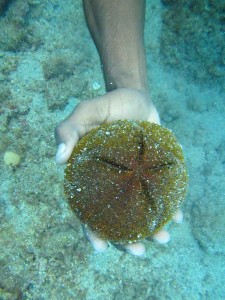
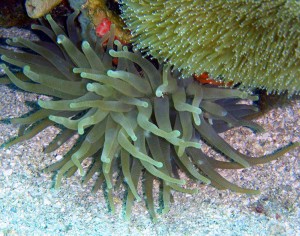
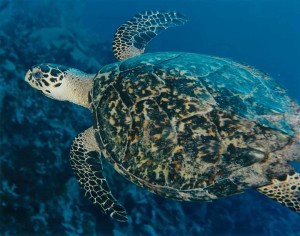
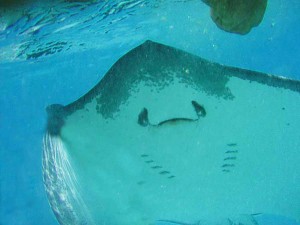
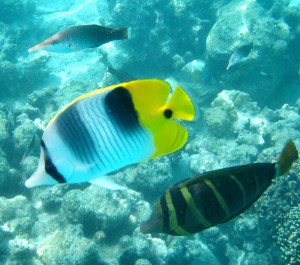
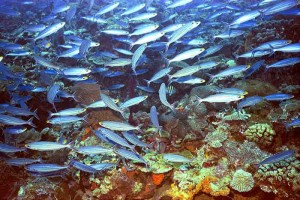
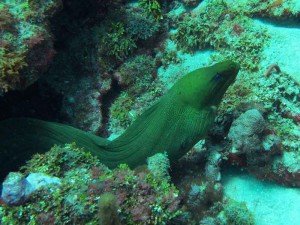
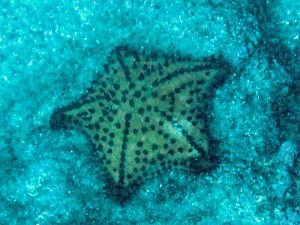
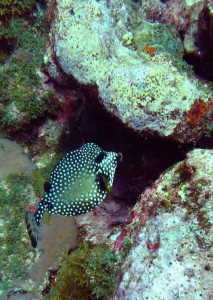
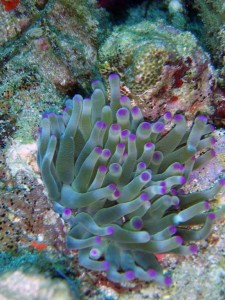
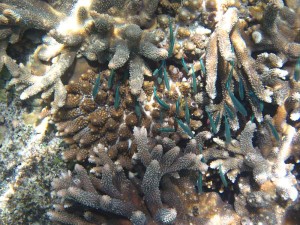
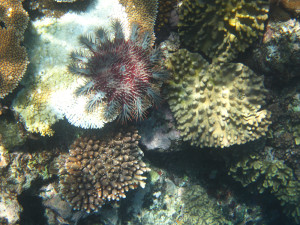
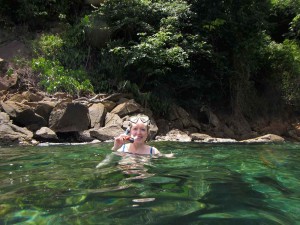
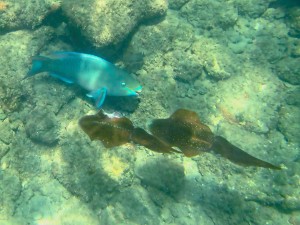
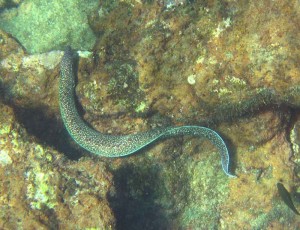
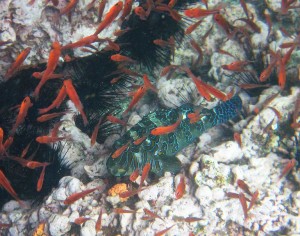
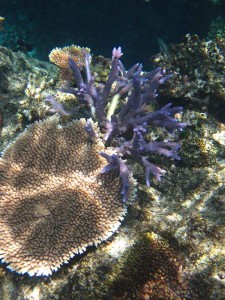
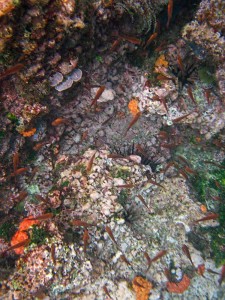
This is an interesting, in-depth article. It makes it tempting to want to try at least snorkeling. Great pics too.